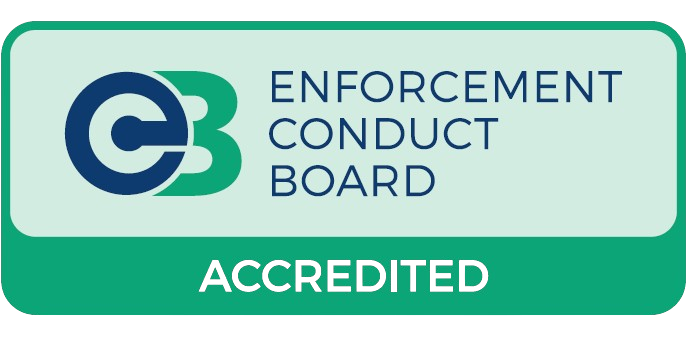Lease Forfeiture v Secure Lock Change — What is the Difference?
Two similar-looking actions with very different legal outcomes. Use this guide to choose the correct route for your property and risk profile.
Snapshot: Forfeiture ends the lease(landlord regains possession and becomes liable for non‑domestic (Business) rates from re‑entry). A secure lock change does not automatically end the lease — it simply secures the premises; the tenant remains on the lease and continues to accrue rent and business rates.
At-a-glance Comparison
| Aspect | Lease Forfeiture (Peaceable Re‑entry) | Secure Lock Change (No Forfeiture) |
|---|---|---|
| Legal effect | Ends the lease on re‑entry where a right to forfeit exists and is lawfully exercised. | Does not end the lease; only makes the premises secure (e.g. following abandonment or break‑in). |
| Who is in possession? | Landlord retakes possession; tenant’s right of occupation ceases (subject to relief, where applicable). | Tenant remains in legal possession under the lease; landlord simply prevents unauthorised access. |
| Rent liability | Future rent under the forfeited lease stops accruing (save for any dilapidations/mesne profits). | Tenant remains liable for ongoing rent under the lease. |
| Business rates (NDR) | Landlord becomes liable for non‑domestic rates from the date of re‑entry (subject to any relief/exemptions). | Tenant remains liable for business rates while the lease continues. |
| Use cases | Persistent rent arrears; serious breach; insolvency risk; landlord wants premises back promptly. | Suspected abandonment/absconded tenant where lease is to remain in force; post‑incident securing after break‑in. |
| Risks | Waiver of the right to forfeit; unlawful re‑entry; relief from forfeiture applications. | Allegations of derogation from grant if access is impeded; ensure no exclusion of a tenant still in occupation. |
| Signage | Forfeiture & re‑entry notices displayed; inventory and photographic evidence taken. | Security notice only (no forfeiture wording); evidence of condition and reason for securing. |
Absconded tenant example
If a tenant has absconded and the premises are vulnerable, a secure lock change protects the site while keeping the lease in the tenant’s name. The tenant remains responsible for accruing rent and business rates. If the landlord instead forfeits, the lease ends and the landlord becomes liable for business rates from re‑entry.
Documentation tip
Keep a clear audit trail: attendance notes, photos, meter readings, and an inventory — whether you forfeit or just secure.
How to Decide Which Route Fits Your Scenario
Choose Forfeiture when:
- You want the premises back and the lease contains a valid right to forfeit (e.g. for rent arrears/breach).
- You’ve not waived the right to forfeit by demanding/accepting post‑breach rent.
- You accept NDR liability from re‑entry and have a reletting plan.
Choose Secure Lock Change when:
- You suspect abandonment or need to protect the site after a break‑in or health & safety issue.
- You want the lease to remain in the tenant’s name so rent and rates continue to accrue to them.
- You may still pursue CRAR or negotiate a surrender without committing to forfeiture.
Important: If anyone is in occupation (staff, licensees, residential occupiers), do not attempt peaceable re‑entry. Ask us for advice. Always check for insolvency procedures and residential elements.
Our Process
Forfeiture — Peaceable Re‑entry
- Eligibility & waiver check; lease review.
- Plan attendance; locksmith & inventory prepared.
- Re‑entry; forfeiture notices affixed; full evidence pack.
- Post‑entry securing; keys held; meter readings.
- Handover pack to landlord; aftercare & reletting support.
Secure Lock Change (No Forfeiture)
- Risk & abandonment assessment; lease check.
- Attendance to secure only ; no forfeiture wording used.
- Security notice displayed; evidence & inventory captured.
- Tenant remains liable for rent & NDR; next‑step options reviewed.
- Follow‑up: CRAR, surrender negotiation, or ask us for advice on next steps.
FAQs
Does forfeiture always make the landlord liable for business rates?
From re‑entry the lease ends, so liability for non‑domestic rates generally falls to the landlord (subject to any reliefs/exemptions offered by the billing authority).
What if I only change locks because the site was broken into?
That is a secure lock change. It protects the premises but does not end the lease. The tenant remains responsible for ongoing rent and business rates.
Can I pursue CRAR after a secure lock change?
Yes — securing does not waive rent arrears. You can pursue CRAR while the lease remains in force, provided statutory conditions are met.
What if the tenant seeks relief from forfeiture?
The court may grant relief on terms (often clearing arrears/costs). We’ll preserve evidence and coordinate with your solicitors.
How do I avoid waiving my right to forfeit?
Avoid demanding or accepting post‑breach rent and take advice before correspondence. Our team can perform a waiver check prior to attendance.
Need help deciding?
Speak with an enforcement specialist today. We’ll confirm eligibility and the quickest, safest route for your property.



